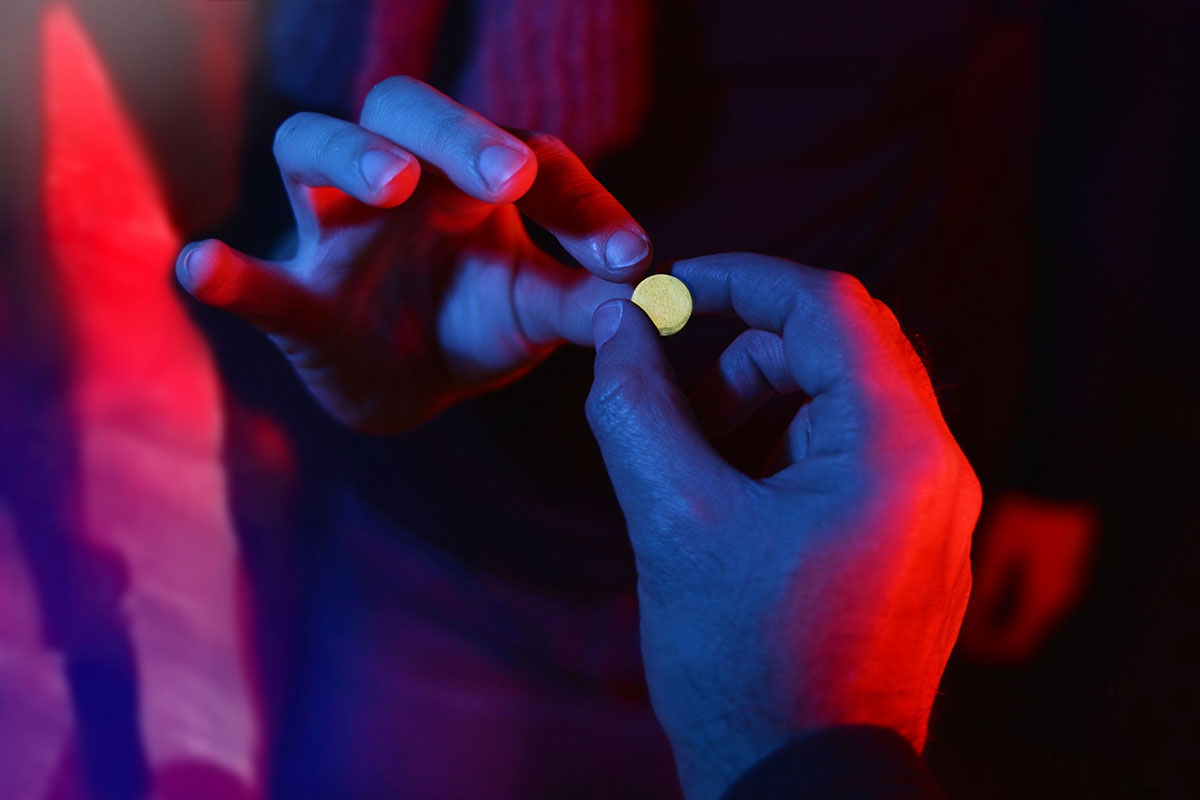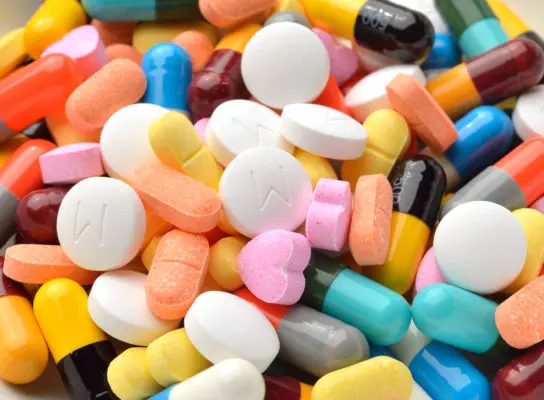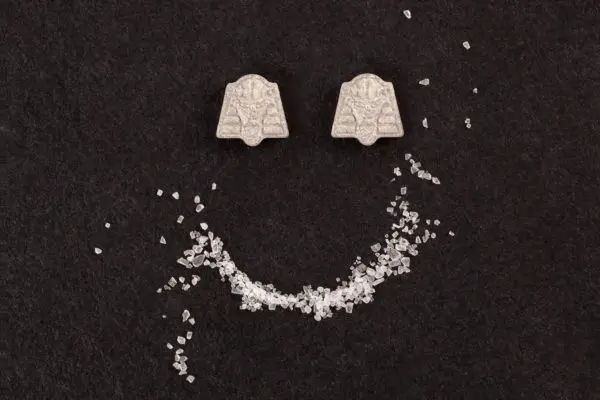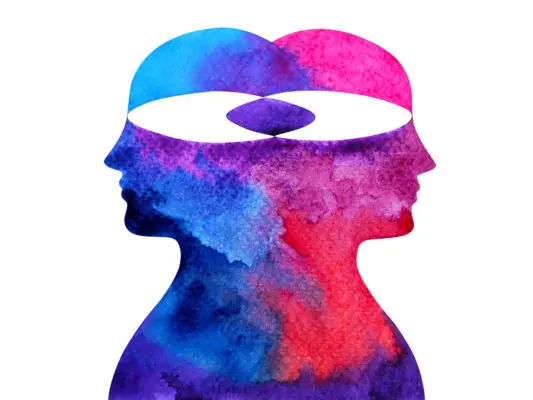Medical Editor: Dr. Benjamin Malcolm, PharmD, MPH, BCPP
Ecstasy…Molly…MDMA…party amphetamine or psychiatric wonder drug?
Our understanding of the actions of 3,4-methylenedioxymethamphetamine (MDMA) as an agent of healing is coming full circle: From early use on couple’s therapy couches during the 1970s to the recreational use in raves that landed MDMA as an illegal substance, to re-emergence in therapeutic settings to treat psychiatric trauma. It’s apparent there are a few sides to MDMA.
MDMA is a synthetic psychoactive substance (phenethylamine) with both stimulant and psychedelic properties. It works by releasing neurotransmitters and is particularly strong in its ability to release serotonin compared to norepinephrine and dopamine. It also binds to ‘psychedelic receptors’ or serotonin 2A receptors. There are neurohormonal effects to MDMA, such as the release of oxytocin and antidiuretic hormone (vasopressin), which can play a role in both positive and toxic effects.
But what does it feel like to take MDMA?
Like most psychedelics, a range of effects are possible and highly context or set and setting-dependent. Let’s walk through the effects of MDMA in different settings, the risks, and benefits of each, and what taking MDMA might feel like.
The Benefits and Positive Effects of MDMA
The beneficial or positive effects of MDMA are different depending on the situation and intentions of the user. For example, persons taking MDMA in recreational nightlife environments may notice euphoria, wakefulness, and increased energy as positive effects, while persons with PTSD in supported therapeutic settings may notice lowered anxiety, expansive emotions, and decreased fear responses as positive effects.
MDMA is arguably better classified as an entactogen (to touch within) than a psychedelic or entheogen (to cultivate the divine within) as it generally lacks the profound perception and thought-disrupting properties of classic psychedelics such as psilocybin, LSD, or DMT.
Generally, MDMA can produce euphoria, increased energy, lowered fear and anxiety, enhanced mood, and an increased sense of connection both with oneself and others.
Positive Effects of Taking MDMA:
- Euphoria: MDMA can induce intense feelings of happiness, pleasure, and emotional connection with others. Users often describe a profound sense of well-being.
- Increased Empathy: MDMA can enhance feelings of empathy, making it easier to connect with and understand others on a deeper level.
- Enhanced Sensory Perception: Many users report heightened sensory experiences, such as enhanced touch, taste, and appreciation for music and lights.
- Reduced Anxiety: MDMA can temporarily alleviate feelings of anxiety and fear, creating a sense of relaxation and comfort in social settings.
- Energy and Alertness: Users often experience increased energy and alertness, which can lead to dancing, physical activities, and social interactions.
MDMA may be subjectively felt in waves or periods of waxing and waning experience intensity. This is often referred to as ‘rolling’ among MDMA users. MDMA can heighten senses. Colors and patterns may appear more beautiful, music sounds even better, and touch becomes highly sensitive and pleasurable. “You feel as if your purpose is meaningful and that you have every reason to love yourself and have others love you,” describes one Reddit user. While this explains why MDMA is popular at raves, concerts, and parties, they’re also indicative of its therapeutic applications.
In the 1970s, MDMA was used in particular as part of couple’s therapy. Its ability to lower the fear response while increasing compassion and empathy helped couples understand one another, forgive, and collaborate. After it became outlawed, some psychedelic therapists and patients continued to use MDMA discreetly, and it is now seeing a resurgence in medical applications.
In 2017, MDMA was approved for Breakthrough Therapy designation by the U.S. Food and Drug Administration (FDA). In Phase 2 clinical trials, half of participants no longer met the criteria for PTSD after receiving two MDMA-assisted psychotherapy sessions spaced a month apart. It was noticed that persons who got three sessions did better overall than two, so all participants will receive three MDMA-assisted psychotherapy sessions in Phase 3 trials.
So far, science suggests that MDMA can treat PTSD by reducing fear and defensiveness while increasing empathy, introspection, and a willingness to discuss emotionally charged memories. This allows those with PTSD to safely revisit and process trauma.
MDMA will undoubtedly remain a highly popular recreational drug due to its ability to produce euphoria and foster feelings of social connection. It’s also poised on the brink of medical approval and its use in persons with mental illness in therapeutic settings is predicted to increase. Different settings and different populations of users can introduce different risks to the use of MDMA. Let’s explore the downside now.
Potential Risks and Negative Side Effects of MDMA
The possible toxicities and adverse effects of MDMA have been the subject of hot and controversial debate for decades. It’s apparent that like other stimulant amphetamines, there are real risks to consider with MDMA, unfortunately, many risks have been distorted due to the ongoing drug war, attempts at demonizing illegal drugs, or failing to consider the context when harms occur.
Physical Risks of MDMA
MDMA is a stimulant amphetamine and increases blood pressure, heart rates, as well as core body temperature. This can result in cardiovascular emergencies such as heart attacks or strokes in persons with pre-existing conditions or high blood pressure.
Due to excitatory effects on neurons and the ability to raise body temperature, seizures are possible. MDMA’s release of vasopressin can decrease the body’s sodium levels leading to electrolyte imbalance, and further increase the risks of seizures.
Overdose of MDMA can result in life-threatening serotonin syndromes or stimulant toxicities and has resulted in death. More common and less serious effects include loss of appetite, jaw clenching, anxiety, and headache.
In properly screened persons for pre-existing conditions and use of pure MDMA at moderate doses, there have not been any serious adverse effects reported in clinical trials to date. While severe physical adverse effects can occur with MDMA, millions of doses are taken around the world without indication of harm in the majority.
Psychological Risks of MDMA
MDMA is a central nervous system stimulant with psychedelic effects on emotional ranges, which can increase risks of psychosis or mania in persons predisposed to psychotic illnesses or bipolar disorder. MDMA works by releasing serotonin, which can leave neurotransmitter levels depleted after use, resulting in after-effects such as low mood, irritability, insomnia, difficulty concentrating or regulating emotions.
In clinical trials, these effects have been mild, tolerable, and resolved within 5-7 days of MDMA use. Some have experienced an ‘MDMA afterglow’ as opposed to negative after-effects.
With higher doses, combining other substances with MDMA, and more frequent use, longer-term deficits in cognition and increased mood or anxiety problems have been reported.
Therefore, the total dose and frequency of use are likely strong factors in MDMA’s risks of neurotoxicity.
Environmental Risks of MDMA
When MDMA is used in nightlife settings there are often factors present that can increase risks of use. For example, many raves or clubs are hot environments, with little access to water, and repetitive strobing lights. In conjunction with high physical output, body temperatures may reach dangerous levels and increase the risks of seizures or other adverse effects.
In MDMA-assisted psychotherapy, the set and setting reduce risks associated with nightlife settings, although risks related to emotional vulnerability and openness are still present.
For example, there have been some cases of unethical use of MDMA in therapeutic settings in which the user is taken advantage of sexually or emotionally. These risks persist across psychedelics and settings of use, however, may be less expected in therapeutic settings.
Risks of Impurity and Substitution
Another significant risk of taking MDMA is unknowingly ingesting a dangerous substitute or adulterated product. Psychoactive substances designed to mimic the effects of MDMA like MDMA can be cut or substituted with MDA (methylene-dioxyamphetamine), sometimes called sass or sassafras.
MDMA can also be cut with other amphetamines (methamphetamine) or with synthetic cathinone “bath salts” (methylone, mephedrone, 3-MMC).” These are synthetic cathinones, a class of amphetamine-like stimulants meant to mimic psychedelics’ effects while enjoying legal loopholes.
Similar to MDMA, they come with substantial risks. Cardiac, psychiatric, and neurological symptoms requiring medical treatment are the most common adverse effects reported in synthetic cathinone users who need medical care. Deaths have also been reported.
Other MDMA adulterants can include amphetamine, methamphetamine, and even cocaine, dextromethorphan, coke, and caffeine. These can come with anxiety, panic attacks, and cardiovascular problems.
The most efficient way to ensure that one’s MDMA is pure is with a testing kit available online and sometimes provided at raves or music festivals as part of a harm reduction initiative.
Legal Risks of MDMA
MDMA is regulated as a Schedule I illicit substance currently, thus use outside of clinical trials is illegal and may result in significant legal penalties.
Comedown Considerations
A “Molly” comedown, referring to the aftermath of taking the drug MDMA (commonly known as ecstasy or Molly), can vary from person to person, but it generally involves a range of physical and emotional symptoms.
MDMA is notorious for having some after-effects, which were mentioned in the risks above. MDMA affects serotonin levels in the brain; comedowns the day to a few days after taking the substance are common.
What a Molly comedown can feel like:
- Fatigue: One of the most common symptoms is extreme fatigue. After the stimulating effects of MDMA wear off, users often feel physically and mentally drained, leading to a significant drop in energy levels.
- Depression and Anxiety: Many people experience feelings of sadness, depression, and anxiety during the comedown. This can be due to the depletion of serotonin, a neurotransmitter that plays a role in mood regulation, which MDMA affects.
- Irritability and Mood Swings: Mood swings and irritability are also common. The abrupt shift from the euphoria of the drug’s effects to the sober reality can be emotionally challenging.
- Physical Discomfort: You may experience physical discomfort, including muscle tension, headaches, and jaw clenching (common side effects of MDMA use). Dehydration and electrolyte imbalances can exacerbate these symptoms.
- Insomnia: Difficulty sleeping is another common issue during the comedown. The stimulant effects of MDMA can linger, making it hard to relax and fall asleep.
- Nausea and Loss of Appetite: Some individuals may experience nausea and a loss of appetite as the drug leaves their system.
- Brain Fog: Cognitive difficulties, often referred to as “brain fog,” can occur, making it challenging to concentrate or think clearly.
- Cravings: Some people may experience cravings for more MDMA to alleviate the comedown symptoms, which can lead to a cycle of use.
The duration and intensity of these symptoms can vary depending on factors such as the individual’s metabolism, the dose of MDMA consumed, and their overall physical and mental health. It’s crucial to remember that MDMA use can have serious health risks, including the potential for overdose and long-term damage to the brain and body.
One should make time for rest and integration work after taking MDMA to allow space to monitor and interact with feelings that occur in the week after MDMA-assisted therapy. If someone is prepared for a comedown or recognizes it as part of their overall experience with MDMA, they are less likely to be caught off guard by these effects.
Drinking adequate (not excessive) amounts of water, taking breaks from hot environments avoiding prolonged use of hot tubs or jacuzzis, and avoiding use alongside alcohol or other drugs are some harm-reduction precautions that can decrease risks of short or long-term effects.
Giving adequate breaks between uses of MDMA (no more frequent than a month apart) and using moderate doses (up to 187.5mg total over an initial and booster dose) also decreases the risks of adverse effects.
Summary and Conclusions
The effects and experience of MDMA are obviously different from classic ‘hallucinogen’ type psychedelics such as psilocybin and LSD or glutamate-blocking psychedelics like ketamine. This brings some positive effects and may make MDMA a wonderful tool for therapeutic use due to the relatively stable sense of self (lack of ego-dissolution) and generally positive effects on mood.
The euphoric nature and amphetamine basis of MDMA also introduces some risks and drawbacks. If one is concerned about the risks of MDMA, assisted therapies with either ketamine or classic psychedelics may be a better mode of healing.
However, for persons who could benefit from psychedelic therapies and are concerned about the extreme perceptual distortion effects of classic hallucinogens or dissociative effects of ketamine, MDMA could be a helpful option. As one MDMA-assisted therapy participant described “I thought I was going to feel drugged or intoxicated, instead, I felt more like myself than I ever had before, I thought ‘this is who I am without the fear.”
Further Read More About MDMA:








